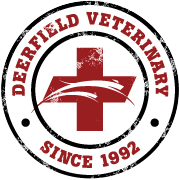Library
-
Cataract formation is a reasonably well-known occurrence in pet birds. Canaries are more prone to cataract formation than other species of birds. Cataracts may be inherited or be secondary to a traumatic injury or infection involving one or both eyes.
-
A cataract is an increase in opacity of the eye’s lens. Any type of inflammation or damage to the lens can lead to a cataract. The clinical signs of cataracts vary depending on the size of the cataract; many cataracts are asymptomatic at the time they are diagnosed during a veterinary exam. The ideal treatment for cataracts is surgery, but not all cats are candidates for surgical treatment. In these cases, anti-inflammatory medications may be used to prevent glaucoma and other secondary complications of cataracts.
-
Inside the eye is a lens that focuses light on the back of the eye, or retina. Vision occurs at the retina. The structure of the eye is similar to a camera, which has a lens to focus light on the film. A cloudy or opaque lens is called a cataract.
-
There are many potential hazards for cats who live outdoors. This handout discusses some hazards including wild animals, infections, parasites, toxins, and cars, among others. Fenced yards do not protect cats nor keep them contained to the yard. If you feel your cat must go outdoors, train them to wear a leash and harness and/or create a safe outdoor cat enclosure and always monitor them when they are outdoors.
-
Periodontal disease is the most common problem affecting cats of all age groups. The importance of daily, at-home dental care cannot be overemphasized. Cats may benefit from either a food, treat, water additive, gel or powder that has been approved by the VOHC to reduce plaque buildup.
-
Online shopping is convenient, but it’s important to be cautious about what you purchase online, especially when it comes to your pet's medications. Follow recommendations from your veterinary clinic and avoid any company that does not require a prescription from your veterinarian.
-
Cefadroxil is an antibiotic (first-generation cephalosporin) used to treat bacterial infections of the skin, respiratory tract, and urinary tract in cats and dogs. It may be used off label in other cases. Cefadroxil comes in tablet and powder forms that may be compounded into liquid.
-
Cefovecin (brand name: Convenia®) is a cephalosporin antibiotic used off label in cats and dogs for skin infections, periodontal disease, and urinary tract infections. It has also been used as a part of outpatient treatment for parvovirus and other bacterial infections. Cefovecin is given by injection under the skin.
-
Cefpodoxime is a third-generation cephalosporin antibiotic used to treat skin infections in dogs. It is also used off-label in cats and to treat other types of infection. It is given orally in tablet or liquid form. Side effects are uncommon.
-
Cephalexin (brand names Rilexine®, Keflex®, Vetolexin®) is an oral antibiotic used to treat pyoderma and other bacterial skin infections in dogs and is used off label (extra-label) in cats, horses, ferrets, reptiles, and birds to treat pyoderma and some other skin infections. It is sometimes used off label (extra label) to treat some urinary tract infections in cats and dogs.
